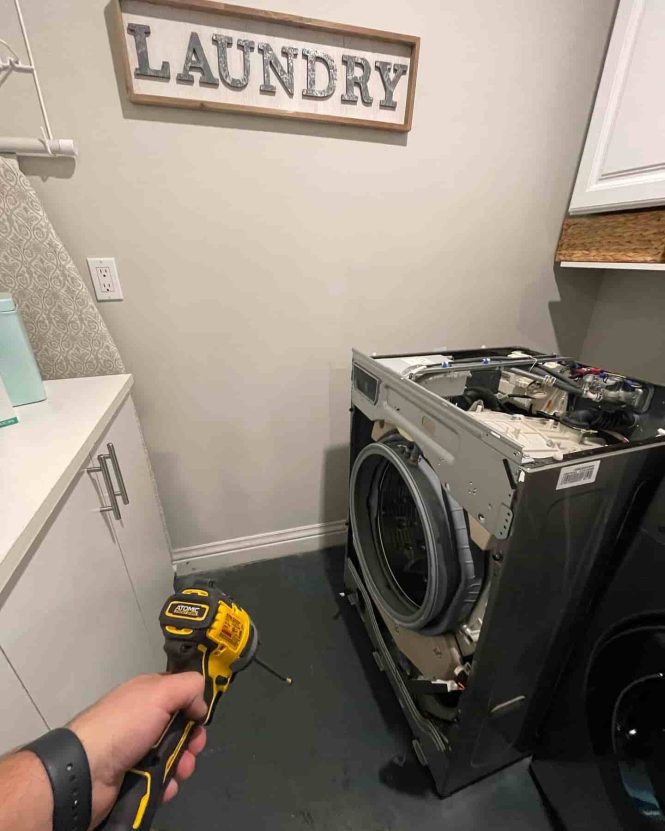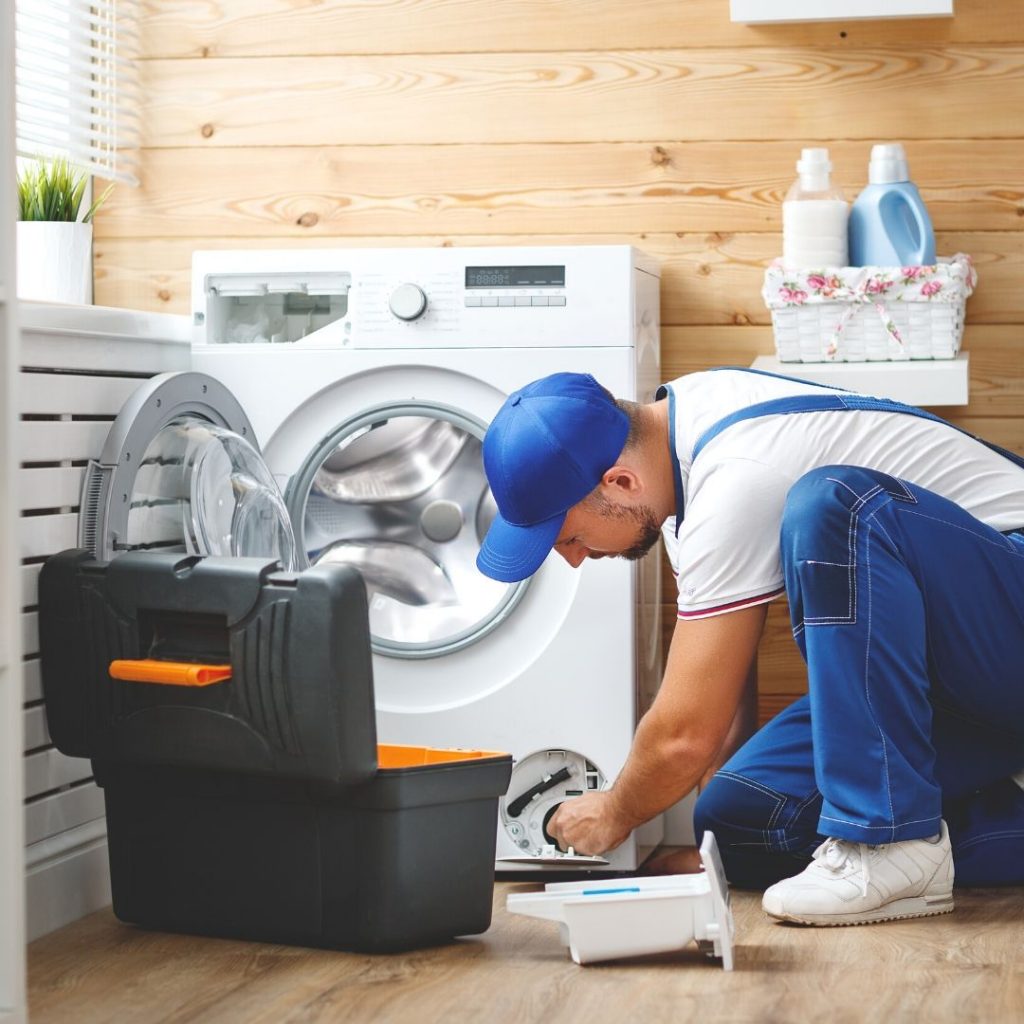

Laundry room appliance repairs can be a frustrating but necessary task. A malfunctioning washing machine or dryer can disrupt your laundry routine and potentially lead to costly repairs. This comprehensive guide will walk you through the common problems you might encounter in your laundry room and provide practical solutions for addressing them. Whether you’re a seasoned DIY enthusiast or a complete novice, this guide will arm you with the knowledge and steps needed to fix these common issues yourself. We’ll delve into everything from straightforward troubleshooting to more complex repair scenarios and cover crucial maintenance tips to prevent future problems. We’ll also provide insights into when professional help is essential, helping you make informed decisions.
Washing Machine Repairs: Common Issues and Solutions
Diagnosing a Leaking Washing Machine
Leaking washing machines are a common problem. The first step in troubleshooting is identifying the source of the leak. Is it from the fill hose, the drain hose, or the machine itself? Carefully inspect all hoses for kinks, tears, or loose connections. If the leak originates from the machine, it could indicate a problem with the water supply valve or a faulty seal. In some cases, a simple tightening of the hose connections can fix the issue. If not, you may need to replace the affected part. Professional service should be sought if you’re uncomfortable working with water supply valves or machine interior components. Proper diagnosis is key to prevent further damage. Consider the cause of the water build-up to determine the right fix. A clogged drain pump can lead to overflowing issues that require professional attention.
Dryer Repair: Troubleshooting and Maintenance
Common Dryer Problems and Their Solutions
Dryer malfunctions can range from minor issues like a tripped circuit breaker to more complex problems such as a faulty heating element. A common problem is a dryer that won’t heat up. Check the circuit breaker first. If it’s tripped, it may be related to a thermal overload in the dryer itself, or maybe the power supply to the whole house. If that’s not the issue, check the dryer’s heating element; a malfunctioning element is a common culprit. Replacing a faulty part is generally straightforward, but a lack of expertise might result in damage or safety hazards. Ensure you unplug the dryer and wear appropriate safety gear. In the case of a heating element malfunction, call for professional repair.
Preventative Maintenance for Laundry Room Appliances
Proactive Maintenance Strategies
Preventative maintenance is key to extending the lifespan of your laundry room appliances and avoiding costly repairs down the line. Regular maintenance includes cleaning lint traps in the dryer, ensuring proper ventilation, and checking hoses for leaks. It’s also crucial to regularly clean the washing machine drum and detergent dispenser to prevent clogs and residue buildup. Using appropriate detergents and avoiding overloading your machines are also important steps in preventing potential issues. Following these simple maintenance steps can dramatically increase the lifespan of your appliances. Knowing the indicators for wear and tear, such as unusual noises or vibrations, can help you catch problems early.
When to Call a Professional
Recognizing the Limits of DIY Repairs
While many minor repairs can be handled at home, some issues might require the expertise of a professional appliance repair technician. If you encounter issues with electrical components, complex mechanisms, or serious structural damage, professional help is recommended. A qualified technician has the knowledge, tools, and experience to diagnose and repair these problems accurately, preventing further damage and ensuring safety. Recognizing when you need professional help is critical for preventing costly mistakes.
Understanding Appliance Warranties
Ensuring Coverage for Repairs
Understanding your appliance warranty is crucial for navigating repairs. Review the warranty details, as it might cover certain repairs or parts for a specific timeframe. Often, professional repair services are covered during the warranty period, and this is usually part of the agreement that comes with the purchase of the appliances. Contact your manufacturer or retailer to understand the specifics of your warranty before attempting any DIY repairs.
Other Potential Laundry Room Appliance Repair Needs
Addressing Additional Issues
Beyond washing machines and dryers, other laundry room appliances may require repairs such as folding machines, ironing machines, and water softeners. These issues are similarly addressed through diagnostics, and many issues can be resolved through proactive maintenance. Troubleshooting these particular problems is important. Understanding the function and inner workings of each specific machine is crucial for effective troubleshooting.
Cost Considerations for Repairs
Budgeting for Laundry Room Maintenance
The cost of laundry room appliance repairs can vary greatly depending on the appliance type and the severity of the issue. Understanding potential repair costs and weighing the options will help you make informed decisions about your next steps. Contacting a local professional is a great idea before proceeding.
DIY vs. Professional Repair
Deciding on the Best Course of Action
Choosing between DIY repairs and professional assistance involves considering factors such as your comfort level, technical skills, and the complexity of the repair. Carefully weigh your options and be aware of the potential risks of attempting repairs beyond your skill set. Assess your comfort level with the tools and techniques involved before you proceed with a DIY repair.
Important Safety Precautions for Laundry Room Repairs
Ensuring Safety When Working with Appliances
Always disconnect the appliance from the power source before attempting any repairs. Be mindful of potential electric shocks or hazards. Properly handle and dispose of any parts that need to be replaced or disposed. Consult a local professional if unsure about the necessary steps for a safe and effective repair. Working with power tools and water is critical for safety precautions when addressing appliance problems.
Frequently Asked Questions
Q1: What are the most common reasons for a washing machine to leak?
The most common reasons for a washing machine leak include damaged hoses, faulty water supply valves, worn seals, or clogged drain pumps. Identifying the source of the leak is critical to preventing further damage and ensuring effective repair. Visual inspection for damaged hoses, inspecting the connections for any wear or tears, or checking the seals for any cracks will be needed to determine the source of the leak. Professional assistance should be sought in complex scenarios.
Q2: How often should I clean my dryer’s lint trap?
You should clean your dryer’s lint trap after every load. Clogged lint traps can restrict airflow, leading to overheating and potential fire hazards. Failing to clean the lint trap regularly can reduce the efficiency of your dryer and can also cause overheating in the machine which could potentially damage it.
In conclusion, tackling laundry room appliance repairs effectively requires a blend of proactive maintenance, practical troubleshooting, and potentially, professional expertise. By following these tips and identifying the root cause of problems, you can avoid costly repairs and maintain a smooth-running laundry room. If you’re still facing challenges, consider contacting a qualified appliance technician for personalized assistance. Regular maintenance and understanding your appliances will save you time and money.